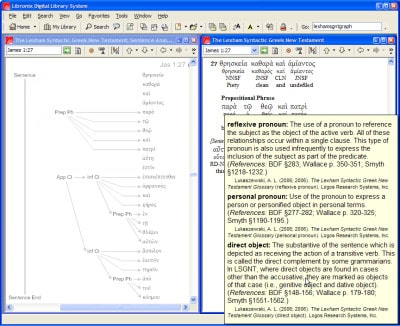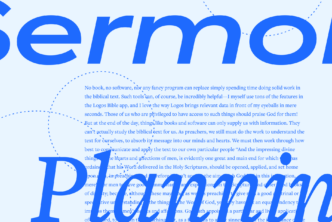I’ve blogged a bit about the Lexham Syntactic Greek New Testament before. Sure, it’s syntax, and that’s important. But how can it be used?
One way is very simple: Use hover popups to show the syntactic force of any word as you read the text, or as you’re brought into the text from searches. The syntactic force annotation is a note as to the role that the word plays in the current syntactic context. It isn’t about morphological form, it is about syntactic function.
Hover on the inflected word in the Lexham SGNT running text, and see the syntactic force annotation (with definition!) pop up. How cool is that?
Pictures are always good at conveying this sort of thing; moving pictures are even better. The video uses James 1.27 as an example: “Religion that is pure and undefiled before God, the Father, is this: to visit orphans and widows in their affliction, and to keep oneself unstained from the world.” (ESV).
Video: Flash, .75 MB, approx. 1:27, no sound.
Note that all I did here was move the mouse. Also, when multiple notes of force occur on a word this displays what could be multiple possibilities in a given context or a mixture of possibilities acting together. The Expansions and Annotations resource further spells out those complex relationships.
So if your knowledge of Greek syntax is rusty (or even non-existent) you can still work through the text looking into the structure of the text and the syntactic function of words in the text — just by moving your mouse through the passage you’re studying.





